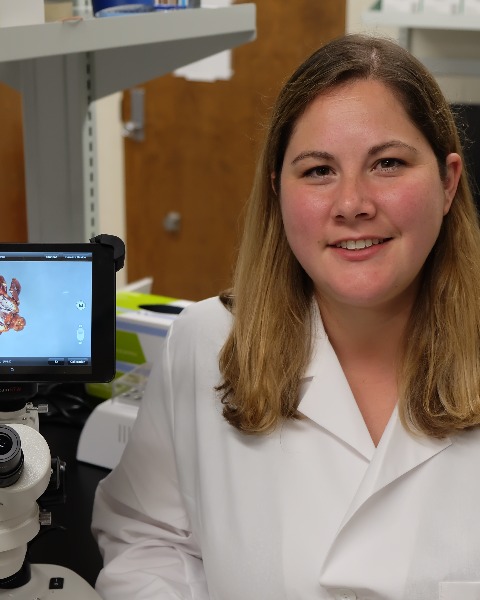Member Symposium
Blood Feeders: A New Frontier for Electropenetrography
Pushing past the limits: Application of electropenetrography to unmask the temporal details of tick feeding behaviors
Sunday, November 5, 2023
2:25 PM - 2:40 PM ET
Location: Gaylord National Resort & Convention Center, National Harbor 13

Kathryn Reif (she/her/hers)
Associate Professor
Kansas State University
Manhattan, Kansas
Presenting Author(s)
Ticks are significant nuisance pests and vectors of pathogens for humans, companion animals, and livestock. Billions of dollars are spent annually trying to control tick populations and manage tickborne diseases veterinary and medical concern. A significant knowledge gap exists regarding the details of tick feeding behavior and associated host interactions at and within the feeding lesion because activities such as mouthpart movements and salivation occur within host tissue, masked from ready investigation. This gap in knowledge presents a significant obstacle to the development and rigorous evaluation of tick and tick-borne pathogen control products. Electropenetrography (EPG) offers a profound solution to investigate on-host tick feeding behavior in real time. EPG was used to monitor the on-host feeding behaviors adult Dermacentor variabilis and Amblyomma Americanum, two medically important U.S. tick species. These initial EPG recordings were performed during early stages of slow-phase tick feeding using an awake calf host. Both tick species exhibited discernable and stereotypical waveforms of low-, medium-, and high-frequencies. Similar waveform families and types were observed for both tick species; however, species-specific waveform structural differences were also observed. These early studies provide proof-of-principle demonstrations of the feasibility for using EPG to monitor, evaluate, and compare tick feeding behaviors, providing a foundation for future studies aimed at correlating specific feeding behaviors with waveforms, and ultimately the influence of control measures and pathogens on tick feeding behaviors.

.png)
